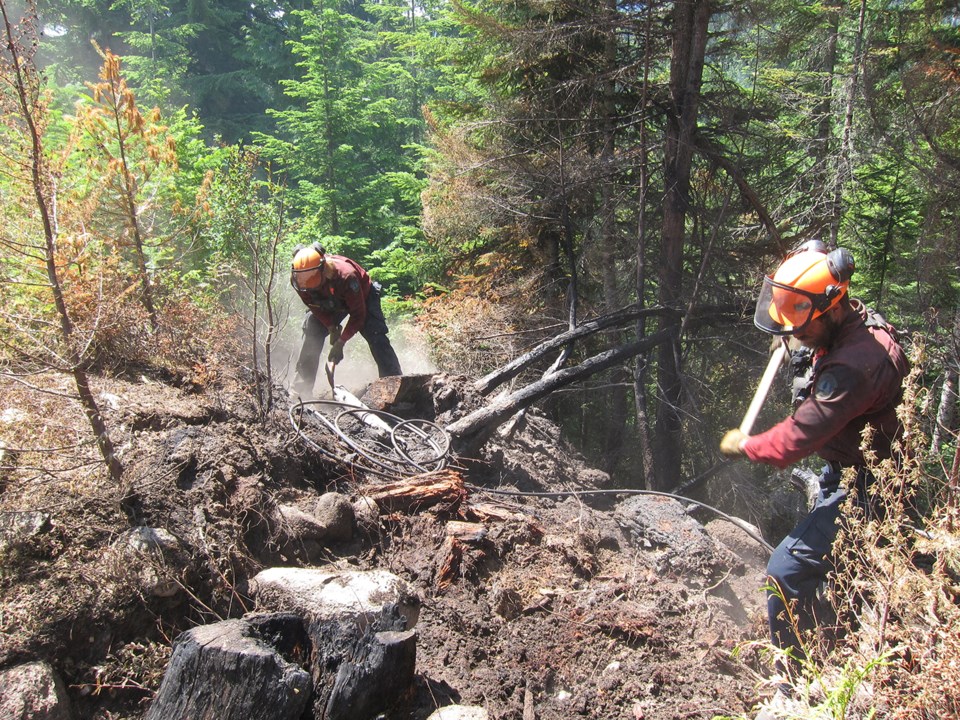Despite the deluge of rain that soaked Squamish over the weekend, this summer in the corridor will likely be remembered as the summer of the smoke, as wildfires continue to burn into September.
The Elaho wildfire, which was discovered June 14 approximately 67 kilometres west of Pemberton and caused a smoky haze to blanket the district in July, is now 100 per cent contained, according to the Coastal Fire Centre (CFC).
“What happens when you contain a fire is you get a perimeter… that you are reasonably comfortable the fire won’t go beyond,” said Marg Drysdale, CFC fire information officer. “And then you allow the fire to burn within that perimeter.”
Letting the fire burn out in within the perimeter ultimately makes for a healthier forest, Drysdale said, because it gets rid of a lot of debris and sick or dying trees.
The Elaho is now 12,523 hectares and has a crew of 20 firefighters and one helicopter maintaining the perimeter, Drysdale said.
“They make sure that the perimeter continues to be solid, they make sure that nothing goes past that perimeter, and they work in some areas where there may be some timber that they don’t want to burn.”
Many trees in the Elaho fire area were “danger trees,” meaning their roots had been compromised by the blaze, Drysale said, and those will be identified and taken down by fallers.
About 15 support staff is also on site supporting firefighters and managing the fire.
Drysdale said it is likely rain will put out the Elaho fire sometime this fall.
In the meantime, there will continue to be smoke and even open flames emanating from the Elaho blaze, she predicted.
The Boulder Creek fire that was discovered on June 30, burning 23 kilometres northwest of Pemberton Meadows, is now an estimated 6,735 hectares and 75 per cent contained, according to the CFC.
The fire is not completely contained only because of the terrain and landslide risks, Drysdale said.
“We are not going to put crews in areas that is going to be dangerous to them, when in fact it is in an area that it can continue to burn.”
Investigation has determined that both wildfires were lightning-caused, according to the fire centre.
As summer gives way to fall, there is less likely to be fires started by lightning, according to Drysdale, although human caused fires are always a possibility.
The campfire ban for the corridor was lifted Friday thanks to the cooler and wetter conditions.
To report a wildfire, unattended campfire or open burning, call 1-800-663-5555 or *5555 on a cellphone.
For more information on wildfires go to www.bcwildfire.ca.



